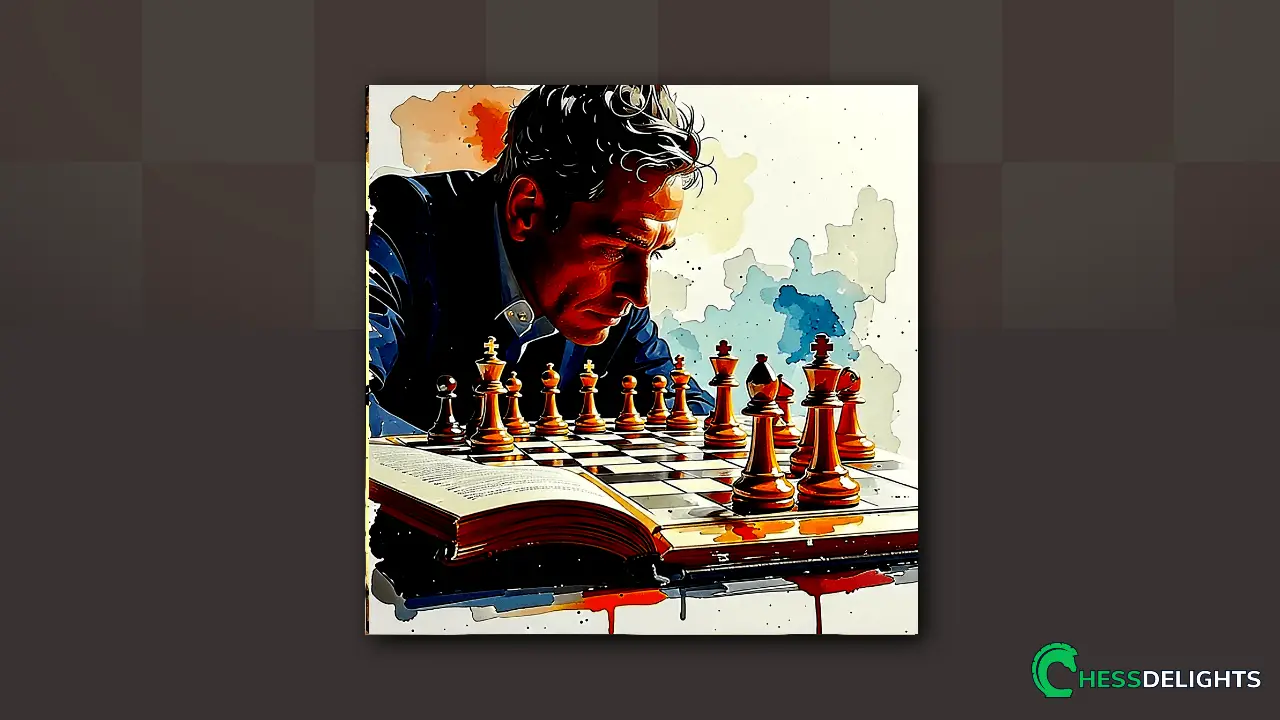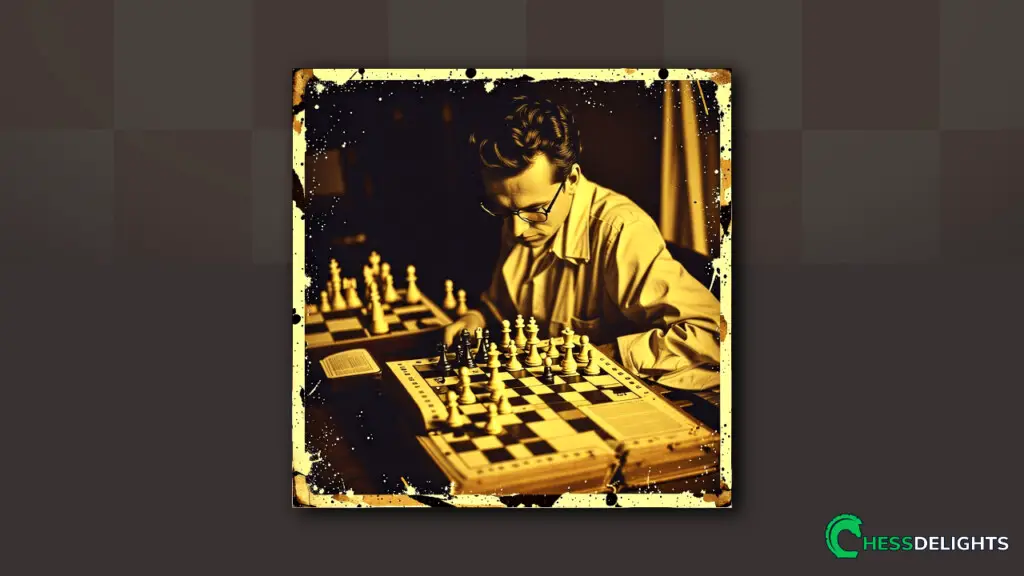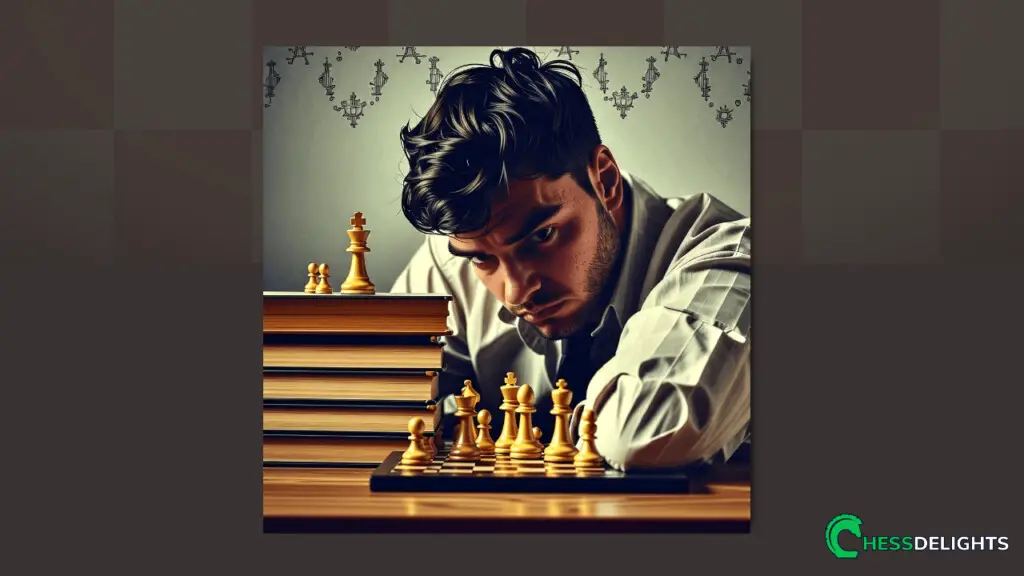Many skilled chess players can indeed read chess books without the use of a physical board, due to their ability to visualize the game's positions in their minds. However, this requires a high level of practice and experience.
For beginners and intermediate players, using a physical board can be beneficial as it helps them better understand and remember the moves and strategies. Some suggest that a combination of both methods works best, reading without a board for the initial study and then using a board for deeper analysis.
The use of digital boards and interactive chess courses alongside reading chess books can also be a useful tool in enhancing understanding and visualization skills. Ultimately, the choice to use a physical board or not while reading a chess book depends on the individual's comfort and level of experience in the game.
Table of Contents
How to Read a Chess Book Without a Board
If you're a chess enthusiast, chances are you've come across some great chess books. However, following along with the moves and strategies can be difficult without a chessboard in front of you. This guide will help you learn how to read a chess book without a board, enhancing your visualization skills and improving your chess game.
Recommended Reading: If you want to know the must read chess books for every type of players, read this article.
Understanding Chess Notation
Before you can read a chess book without a board, it's crucial to understand the chess notation. Most chess books use algebraic notation, which is a standard method for recording and describing the moves in a game of chess.
- Learn the Basics: Each square on the chess board is identified by a unique coordinate pair—a letter and a number. The vertical files are labeled a through h, from left to right from the white player's point of view, and the horizontal ranks are labeled 1 through 8, from bottom to top from the white player's perspective.
- Identify the Pieces: Each piece is represented by a letter: King (K), Queen (Q), Rook (R), Bishop (B), and Knight (N). Pawns are not represented by any letter.
Practice Visualizing the Chess Board
Visualizing the chess board in your mind is a skill that can be developed with practice. Here are a few steps to help you practice:
- Start Small: Begin by visualizing a small area of the board, such as one quadrant. Try to see the squares and pieces in your mind. Gradually increase the area you're visualizing until you can “see” the entire board.
- Follow the Moves: Try following a recorded game move by move, visualizing the position after each move. Start with shorter games and gradually move on to longer, more complex games.
- Use Diagrams: Use the diagrams provided in the chess book to help visualize the board. After each move, try to visualize the new position before looking at the next diagram.
Enhance Your Skills with Tactics and Puzzles
Tactical puzzles are an integral part of chess training. I've personally found them to be extremely beneficial in boosting my ability to visualize and strategize. The essence of these puzzles revolves around a given position from which one has to determine the optimal move or sequence of moves.
It's like solving a mystery where the clues are the positions of the pieces on the board. Practicing these puzzles has compelled me to think multiple steps ahead and predict the outcomes of various move combinations.
By doing so, not only have I improved my visualization skills, but I've also gained a deeper understanding of the intricacies of the game.
Use Digital Boards for Practice
Even though the ultimate goal is to read a chess book without the need for a physical board, I've found that the use of digital boards can vastly aid in reinforcing visualization skills. Digital boards are available on various chess apps and websites, where one can input moves and observe the resulting position.
I frequently use these digital chess platforms as a learning tool. After reading a sequence of moves in my chess book, I replicate them on the digital board. This method allows me to cross-verify my mental visualization with the actual position, thus enhancing my ability to mentally picture the board.
Improve by Playing Blindfold Chess
Blindfold chess is a challenging yet rewarding technique to improve visualization skills. As the name suggests, it involves playing a chess game without actually looking at a board. Initially, it may seem daunting, but I've found that starting slow and incrementally increasing the game length as my skills improved was the best approach.
I recall initially remembering only a few moves, but persistent practice has led me to successfully play full games now. This technique has not only sharpened my visualization skills but also increased my concentration and memory.
Understanding the Importance of Reading Chess Books without a Board
As a chess enthusiast, I have always found reading chess books without a board to be a practical and effective learning technique. It enhances your ability to visualize board positions, an essential skill in chess. Instead of relying on physical presence of the board, your mind becomes the battleground.
It helps in sharpening your mental acuity, improves focus, and boosts memory.
Perks of Reading Chess Books without a Board
Reading chess books without a board offers numerous benefits. It's a convenient way to learn chess – you can do it anywhere, anytime without the need of carrying a chess board with you. Additionally, it trains your mind to visualize complex board positions and calculate moves ahead, effectively improving your tactical and strategical understanding of the game.
Challenges of Reading Chess Books without a Board
While reading chess books without a board has its benefits, it can also pose some challenges, especially for beginners. The main difficulty lies in visualizing the board and keeping track of the pieces in your mind. It can be initially overwhelming, but with consistent practice, this skill can be developed. It's a challenge I faced myself, but eventually, the effort paid off.
The Role of Chess Notations in Reading Chess Books without a Board
When reading a chess book without a board, understanding chess notations is paramount. It's like the language of chess. It allows you to follow the game's progression, analyse positions and strategies. I have found that a solid understanding of algebraic notation is essential in developing the ability to visualize the game without a board.
Recommended reading: If you're looking for the best book that teaches the principles of chess written by a former World Chess Champion – check this article!
How Chess Puzzles Help in Reading Chess Books without a Board
Chess puzzles are an excellent tool for improving visualization skills. By solving these puzzles, you're forced to visualize the positions of the pieces and calculate the best moves – a skill that directly translates to the ability to read a chess book without a board.
My personal experience with chess puzzles has been a rewarding journey, significantly enhancing my ability to read and understand complex chess books without a board.
The Role of Digital Chess Boards in Reading Chess Books without a Board
Digital chess boards can be a great bridge for those transitioning from using a physical board to reading a chess book without one. They helped me verify my mental visualization of the board and cross-reference it with the actual positions.
It's a wonderful tool for self-correction and reinforces the development of visualization skills.
Transitioning to Blindfold Chess: The Ultimate Test of Reading Chess Books without a Board
Playing blindfold chess has been the ultimate test of my visualization skills. It might seem intimidating at first, but with incremental practice, it becomes manageable. This has not just helped me master reading chess books without a board, but also improved my overall chess playing skills, concentration, and memory.
Wrapping Up
Reading a chess book without a board can be a challenging but rewarding way to improve your chess skills. It requires a solid understanding of chess notation, good visualization skills, and plenty of practice. But with time and effort, you can enhance your understanding of the game and enjoy the convenience of reading a chess book anywhere, anytime.
Recommended reading: If you want to learn effective ways to study chess alone, read this article.







